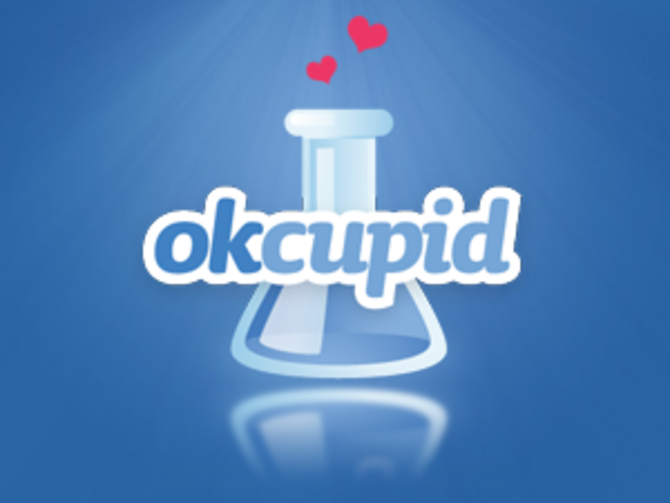“I don’t want to live in the kind of world where we don’t look out for each other. Not just the people that are close to us, but anybody who needs a helping hand. I can’t change the way anybody else thinks, or what they choose to do, but I can do my bit.”
― Charles de Lint
Let’s face it. Being a recruiter isn’t always easy. We talk a ton about “candidate experience,” but the truth is having a good experience works both ways, really, and most of the time, it’s the candidate treating the recruiter like shit, not the other way around.
There’s a reason there’s so much vitriol flung at our profession by most other professionals out there, and why recruiters are so frequently derided and dismissed by the very same people we’re purportedly helping find better jobs and more fulfilling careers. Most of us care about our candidates, which is more than most of our candidates would ever say about us.
Hey. The truth sucks sometimes.
Some Might Say.
 There are, however, those occasional candidates who make all the other stuff somehow tolerable – you know the type. The candidate who every phone call makes you crack up, the kind you develop that instant chemistry with that first phone call and actually enjoy getting to know during the screening and selection process.
There are, however, those occasional candidates who make all the other stuff somehow tolerable – you know the type. The candidate who every phone call makes you crack up, the kind you develop that instant chemistry with that first phone call and actually enjoy getting to know during the screening and selection process.
These are the candidates who know you’re looking out for their best interests, and that they’ll do the same throughout the process, no matter how that process turns out.
These are the candidates we actually bust our asses for – not the ones who dodge our calls and show up late to interviews.
These connections, these relationships, the ones that make recruiting worthwhile, once in awhile, have always been relatively rare. These days, though, they might as well be extinct.
I sincerely miss those days when I was able to do more with my candidates than send out mass e-mails and rely more on tools then on that human touch that used to be the best way for any recruiter to get a real feel for who any candidate really was, for real.
I know this sounds crazy in the age of CRM and social, but at one point in my career, I actually insisted on meeting all my candidates in person. That’s right. I wouldn’t represent a candidate, I wouldn’t think of submitting a resume, unless I’d previously met that candidate in person – and this was a pretty standard policy at the time, at least at most agencies in those days.
In person meetings were business as usual, and they usually did a better job creating the foundation for learning more about them, their professional aspirations and personal passions.
Go Let It Out.
 Spending time with candidates almost always helped with the close in the long run (if needed), and inevitably, led to a positive experience for both parties.
Spending time with candidates almost always helped with the close in the long run (if needed), and inevitably, led to a positive experience for both parties.
While these closer candidate relationships often inordinately helped with ensuring we were able to find candidates who were the right fit for our culture (and vice versa), but fit is irrelevant if you can’t get that perfect candidate to accept an offer – and every little bit helps when it comes to overcoming objections and getting a candidate to that “yes.” Which is really the whole damn point of the job.
Every recruiter looking back on those few scattered candidates spread out across the course of their career who for some reason stood out from the crowd, shaped our professional perspectives and provide the kinds of learning and life experiences you just can’t forget. I’ve written a few posts in the past about some of these candidates I’ve come across over the years before, but I haven’t told you the big one yet.
I haven’t told you about Kevin. He’s the candidate who showed me that sometimes, going the extra mile for job seekers matters not because those additional efforts are going to fill a req or generate a referral, but because it’s just the right thing to do – even if the payoff might not payoff in the ways you first expected. See, Kevin taught me that if you do more for candidates, you’ll always get more as a recruiter – and if you’re not going that extra mile, then many of the best and brightest candidates out there are likely to leave you behind.
As Wayne Dyer once said, “It’s never crowded along the extra mile.”
But it’s a distance that for recruiters, I promise, is always worth walking. Here’s why.
The Masterplan.
 So back in the day, I was working in a technical recruiting role for one of those mega corporations that had so many disparate hiring needs that recruiters would get stuck filling all sorts of random reqs, because someone had to handle them, and since I was at an agency, thought was that it might as well be us instead of the competition.
So back in the day, I was working in a technical recruiting role for one of those mega corporations that had so many disparate hiring needs that recruiters would get stuck filling all sorts of random reqs, because someone had to handle them, and since I was at an agency, thought was that it might as well be us instead of the competition.
This broke our normal rule to not accept non-tech type roles or projects since that was the sole focus of our agency and our business, but when your biggest client tells you they need a candidate, you take the search, even if it’s outside of your normal bailiwick.
This is how I got stuck trying to find a desperately needed corporate collections guy to support entire accounting function at one of the bigger brands out there – which, when you’re finding the guy in charge of keeping the books kept up, is a pretty big responsibility for a recruiter. We’d kicked butt for the tech group, which is how the accounting guys got wind of our agency, and why they came to us with one of their most mission critical, hardest to fill roles in a function none of us really knew a damn thing about.
Now, before I go on, let me reiterate: this was a big customer. Huge, even. The kind that keeps an entire agency afloat, the kind you don’t ever piss off, no matter what (even if that means finding an accountant).
When you rely on the commissions that come with contingency placements to pay the bills, you go where the money is, and in this case, it involved accounting, appropriately enough. Not so appropriate was the fact that we had no single freakin’ clue what the hell a controller did, what we were looking for or where we’d find them. None.
So we did what any recruiting agency would do in such a situation – pick up the phone and start pounding those phones until eventually you hit the paydirt of a placeable candidate. There’s money to be made, an agency is going to take the job; there’s no boutique or speciality shop that won’t figure out pretty much any search that comes their way if the money’s right.
This, of course, means agency recruiters get stuck with some pretty strange searches sometimes. I had my controller to find, even if I had no f-ing idea where one finds these collections types – nothing against finance recruiters, but seriously? Recruiting is boring enough without having to focus on finding accountants, much less a gig that was, in fact, the corporate equivalent of the guy who broke your pinkies if you couldn’t pay up in time – or figured out some other crafty way to get whatever outstanding debt was owed. I shit you not – Fortune 500 companies have loan sharks, too. Or something strangely similar, I suppose.
This, of course, I only found out after I was tasked with finding one for our biggest customer. I was collecting collectors, which meant as far as I was concerned, I was utterly out of my league.
Suddenly, all those software engineering searches seemed pretty easy by comparison. Compared to finding qualified corporate collectors, coders are a piece of freaking cake. Trust me.
Little by Little.
 By this point in my career, I’ve pretty much recruited for every position you can think of, so this wouldn’t phase me nearly as much today as it did back in the day, when I was purely an IT recruiter who frankly could give two shits about accounting, collections or similarly boring back office work.
By this point in my career, I’ve pretty much recruited for every position you can think of, so this wouldn’t phase me nearly as much today as it did back in the day, when I was purely an IT recruiter who frankly could give two shits about accounting, collections or similarly boring back office work.
Accounting was dedicated to closing out the past; IT was all about opening up the future, and here I was, stuck with a shit search with literally NO database, resources or clue about where I was supposed to find these guys in the first place.
We had a huge internal resume pool readily available, but that was only for IT; there was one accountant type in there, and he did forensic auditing on computer systems. Even I knew that wasn’t even close to the same thing as collections, and that I had one big ass challenge I was going to have to figure out, and fast.
Here’s what I was given before I set out on my Quixotic quest to fill this req: a really boring job description, a vague intake meeting with the hiring manager that got cut off halfway through and gave me nothing whatsoever to go on, and one shared license to a Monster.com account I could use two afternoons a week. This is before Google and LinkedIn, mind you – which meant I was screwed, or so it would seem.
So I did what any recruiter in my shoes naturally does in this situation: I literally started flailing around every online nook and cranny, every database I could dig up and throw in searches for every keyword (or combination) I’d heard from the position description, hiring manager or the few context clues I’d come across in my remedial research.
Sourcing sucks when you have no idea what role it is you’re really filling, a big handicap considering you can’t fail, at least if you’re the kind of recruiter who has a job and reputation on the line with every single search, no matter what specialty we speciously self-identify with.
Definitely, Maybe.
 I posted. I prayed. I talked to a ton of people who looked like they maybe did something similar on paper but turned out to be completely wrong, picked up what I could from them and a few scattered chat rooms, and began to drink during daylight hours. You know, the usual for a recruiter dealing with an unfillable req and a ton of pressure from a client and your colleagues alike. On second thought, in that situation, better make those drinks a double.
I posted. I prayed. I talked to a ton of people who looked like they maybe did something similar on paper but turned out to be completely wrong, picked up what I could from them and a few scattered chat rooms, and began to drink during daylight hours. You know, the usual for a recruiter dealing with an unfillable req and a ton of pressure from a client and your colleagues alike. On second thought, in that situation, better make those drinks a double.
Here’s to failing. I wasn’t used to it, but after a few days of treading water, I was ready to concede to the inevitable, inevitably.
Then, something amazing and totally unexpected happened. I not only found a pretty good collector. I found the best in the business, or so his resume, references and blue chip background suggested. You know that feeling when you first see a resume or profile as a recruiter, and your stomach drops a little bit with that combination of excitement, relief and the nervousness that comes with making that first call? Most recruiters spend most of their careers chasing that dragon, but I’ll tell you – I’ve never felt that rush quite as intensely as I did that moment I first set eyes on Kevin’s resume.
I mean, I don’t believe there’s such a thing as a “perfect candidate” or a “perfect resume” in the first place, so I hate saying this, but this dude was the real deal.
Kevin not only was viable, but my impatient account manager and frustrated client would finally realize that this was one recruiter who wasn’t going to let them down and was going to deliver the absolute best hire out there. Because that’s how I roll…or at least, that’s what I told them, relieved I didn’t have to raise the white flag for this req.
Don’t Go Away.
 While I had no doubt that anyone with the density of obscure, industry specific buzzwords and deep resume full of niche competitors no one had heard of were as good as gold, I still had a policy. This meant I had to have him come in for an actual in person meeting before presenting that perfect resume to my eager hiring manager and even more eager account manager.
While I had no doubt that anyone with the density of obscure, industry specific buzzwords and deep resume full of niche competitors no one had heard of were as good as gold, I still had a policy. This meant I had to have him come in for an actual in person meeting before presenting that perfect resume to my eager hiring manager and even more eager account manager.
We had an earlier phone screen, and it went well enough for both of us to want to move things forward, but for some reason, waiting on Kevin that morning, I was kind of nervous.
This was unusual for me, but this had to be perfect, since this was my only shot to close this job as I’m pretty sure he was the only qualified candidate out there for this client whose business a bunch of people were counting on for their lives and livelihoods.
No pressure, right? I was already sweating profusely, anxious thoughts racing through my head, when Kevin actually walked in the door – and that’s when I really started to freak the hell out.
Kevin was one of the tallest people I’d ever seen – his biceps were the size of my head, and he looked like he’d probably been a pretty damn good athlete before turning to collections, where, I’m assuming, he was even better. He looked like the accounting version of Andre the Giant, an oversized hulking mass of a man who, I shit you not, had to duck to get through the doors in the office.
It was like having Gheorghe Muresan as a random temp one day, only my giant turned out to be all bark and no bite. In spite of my initial trepidation, Kevin proved to actually be a great guy, and we got along. As we were wrapping up and I could feel what felt like familiarity, of course, I somehow managed to screw up what had been going so well. I did this as I usually do – by attempting (and failing) at making a joke.
In this case, that was my observation about his being born to be a collector, because when he came to my door, I’d give him whatever he wanted, and was sure anyone else would do the same. That is, if he could get in the door at all. If not, I joked, mine only had a seven foot clearance, so I could wait him out inside. Fie, fie, foe, f it…I realized immediately I had made a royal mistake.
Dude looks at me, and I’m thinking, “I’m about to get my ass kicked Shaq-Fu style” when Kevin does something strange. He broke down right there, right in my office, a giant of a man suddenly somehow small. He swallowed back something and told me the real story of his life and how he got into the line of business we both found ourselves unexpectedly in at the moment.
Turns out Kevin didn’t go looking for a profession specifically because of his size and somehow stumbled on a career in corporate collections. In fact, the job is obviously reliant on scaring people enough to part those fools and their money, yet he had neither intention or inclination of doing anything other than doing what he needed to in his job to take care of the two kids he was raising on his own as a widower. This was how he made ends meet, and he didn’t like having to resort to using his physique as a scare tactic to do so, but here he was, looking for work and desperate to find it.
Kevin explained he had been out of work for a while, since it seems that whenever he’d go into meet for an in-person interview (screens on the phone always went fine), for some reason, they’d be just as scared of his size as the deadbeats he would be going after – an unintended intimidation that led to his repeated rejection for positions he was more than qualified for, rejected with the greatest of care, lest he go off the deep end while being turned away.
Kevin wasn’t dumb – he saw this happen again and again, and surmised that because he looked scary, because he was a big guy, the thought of him “losing it” or being a potential physical threat in any workplace based on his sheer size terrified everyone – including me.
Now, Kevin interviewed well – so well, in fact, it was easily one of my best one-on-ones I’d had in several years, but I just couldn’t get over the what it factor – what would happen if this seemingly gentle giant had a giant meltdown on the job? The fact it even crossed my mind ashamed me, but it also demonstrated that Kevin’s job search was being exacerbated by a bias as big as his seven foot something frame.
Which, I figured, actually gave us something in common.
Standing on the Shoulders of Giants.
 Let’s face it. I’m not the smallest guy in the world, either. Not only am I big, I can be, let’s just say, a little loud sometimes, too – a combination I’m acutely aware has unintentionally intimidated other people in the past or left them feeling threatened by me due to my propensity to come across as, uh, “larger than life,” to put it mildly.
Let’s face it. I’m not the smallest guy in the world, either. Not only am I big, I can be, let’s just say, a little loud sometimes, too – a combination I’m acutely aware has unintentionally intimidated other people in the past or left them feeling threatened by me due to my propensity to come across as, uh, “larger than life,” to put it mildly.
In other words, I totally got where Kevin was coming from, and suddenly, I knew I had to help him out, even if it meant breaking that bullshit rule you hear from agencies and RPO farms out there about keeping detached and at a safe distance, emotionally or otherwise, from your candidates. In recruiting, caring too much can come across as a professional hazard.
But I looked at Kevin, sitting there on the other side of my desk, and I saw a guy who was trying to deal with a whole lot of tragedy.
I saw a lost spouse, two kids to take care of, no steady source of income and a whole lot of uncertainty ahead of him. If I didn’t feel for anyone in that situation, I couldn’t look at myself in a mirror – if I didn’t feel that for my candidate, I knew I couldn’t keep recruiting. This meant, I knew at that very moment, that it was my responsibility – no, my moral duty – to help Kevin score this position.
We shook hands and I went to work.
The first thing I did was write up Kevin’s submission, explaining to the hiring manager and stakeholders about what a perfect match he was, and assuring them after our in person meeting, he presented himself with the sort of impeccable and consummate professionalism evidencing the character required to succeed in the client’s culture. He was, for lack of a better term, the man – and we’d be crazy not to hire the guy, I added, doing my business partner best to sound strategic when, in fact, I was just pulling for the dude as best as possible.
The hiring manager called me back pretty soon after I hit send on my submission, exceedingly impressed with his resume, his credentials, my work finding him and getting him interested in this role – the hiring manager had found exactly what he was looking for, which means I had done my job right so far. Of course, the tough part of the process was still ahead of me.
The day came for the final step – Kevin’s in person interview. For the first time in a little while, I remember, I felt excited as a recruiter coming into the office; it’d been some time since I really wanted a candidate to get a gig not because I’d make my fee, but because I was pulling for them, first and foremost, as genuinely good people who deserved a shot at happiness and qualified to be so close to maybe getting there.
This sense of altruism, of admiration for a candidate, was pretty rare since I dealt mostly with contract tech folks who, let’s face it, were arrogant, entitled assholes who could write their own checks and cash them, too. Kevin, on the other hand, needed to catch a break. And I hoped like hell we’d be the ones giving it to him.
Don’t Look Back In Anger.
 I walked Kevin to the conference room and even entering the hall, could see the hiring team’s faces turn to a combination of shock and awe, the tension palpable as they looked up at a candidate who cast, quite literally, a long shadow.
I walked Kevin to the conference room and even entering the hall, could see the hiring team’s faces turn to a combination of shock and awe, the tension palpable as they looked up at a candidate who cast, quite literally, a long shadow.
I now knew what Kevin must have felt every time he went in for an interview, and why I pissed him off so much with my stupid, flippant remark. I saw he didn’t have any allies in that room from that look on their faces, and so I requested to sit in on the interview.
This was against our standard process, but damn it, I was going to get this deal closed as soon as this interview ended, end of story, case closed.
Kevin nailed his interview, answering every question like some sort of SHRM case study in behavioral based interviewing with style, substance and grace.
This was like watching a training video that had been scripted and rehearsed until it was too perfect to be true, and when he was shaking hands on the way out, I knew he had freakin’ nailed it.
Anyone who was at that table could see the fact the job was his. Kevin, however, revealed once we were out of earshot that he didn’t think he’d ever even get an offer. I told him he was crazy, and he shot me a look as he exited the building.
To my surprise (and chagrin), a few days later, Kevin proved himself right. He was absolutely everything they ever hoped for, and yet one of the managers and hiring stakeholders had vetoed moving forward, citing her physical intimidation by his size and vocally asserting her rights to a safe workplace would be in jeopardy were he to join the company. Of course, this was stupid, but they’d made up their minds, and I wasn’t going to convince these dumbasses otherwise. I thanked them, and walked off in disgust.
A few steps from the door, the manager stopped me and asked if I’d stick around for a word in private. The others left, and she waited until we were alone to tell me that although she thought he was a great candidate, she just couldn’t see his size not causing a significant issue in the workplace and spark concern, perceived or otherwise.
She was doing her job of making her workers and clients feel safe, even at the expense of a great candidate. So it goes, and she hoped I understood.
My response was simple; I told her that his job, if I understood it right, was to collect outstanding money from people who didn’t want to pay, and that in fact, that “intimidation factor” should be a preferred qualification, not a knock out. I argued every angle I could, laid it on pretty thick, and tried as hard as I could to get a win for Kevin. He deserved one, more than anyone, really.
Whatever the hell I said must have worked. The very next day, I received a call telling me to move forward with an offer to Kevin – albeit their willingness extended to an initial six month temp-to-hire contract, so it wasn’t a perfect score for me. Still, in recruiting, a win is a win, right? And this was a win, my friends, pure and simple.
Live Forever.
 I picked up the phone and gave Kevin a call, told him to come back by the office and bring the kids if he could. I really wanted to meet them, plus I knew they’d all probably walk away happy considering the news I was going to share. Sure enough, Kevin walks in with two of the most breathtakingly beautiful little boys you’ve ever seen – I mean, I’m not a huge fan of kids, but his were ridiculously cute – and we all made our way to the conference room.
I picked up the phone and gave Kevin a call, told him to come back by the office and bring the kids if he could. I really wanted to meet them, plus I knew they’d all probably walk away happy considering the news I was going to share. Sure enough, Kevin walks in with two of the most breathtakingly beautiful little boys you’ve ever seen – I mean, I’m not a huge fan of kids, but his were ridiculously cute – and we all made our way to the conference room.
There, I closed the door, told him about the change to the temp-to-perm arrangement that they’d agreed to, apologized for that bullshit but assured him in six months, he’d get the gig full time – and I’d have his back to make sure he’d wind up with that offer. After all, I recruited him for a full time role, and somehow, someway, that was what I was going to do for him. I did – but it was largely his doing, as it turns out.
The moral of the story shouldn’t be so surprising. Suddenly, as I could see his eyes process what was happening to him – that at last, a good job was happening to him – this giant whose intimidation had been such a point of contention suddenly broke down in tears, unable to control himself. He cried openly in front of me, his kids, and my account manager. And guess what? We cried, too.
The next thing I remember is literally being swept off the floor in his oversized arms – and that is one hell of a physical feat to get me off the ground, let me tell you – and gave me the biggest, most sincere bear hug I’ve ever gotten and am likely to ever receive.
He kept thanking me for making a difference, and for once, I knew that I had – and I had done so by not giving up on Kevin, because everyone else had, and sometimes, walking the extra mile might not be the most expedient choice for a recruiter, but can significantly, profoundly impact those of the candidates who are putting their lives and livelihoods more or less in our hands. It’s an awesome responsibility – we all have our Kevin stories, and should always be fighting of them every day, since making the right hire is almost never the wrong outcome for any recruiter.
Kevin, of course, was the right hire – it didn’t even take the full six months before they converted him to a permanent employee, and he’s been working his way up in that company ever since. In the past fifteen years or so, he’s gone from collections to the C Suite, and turned his life into the quintessential American success story.
His sons are now both enrolled in college, and he’s hoping to finally retire after the next couple years sitting back in his new found position in upper management – a well deserved payoff for years of amazing service.
Kevin’s changed a lot in all these intervening years, obviously, but one constant still remains: every Christmas, he still sends me a card in the mail, and it always has nothing in there but the two same words that reappear in his annual handwritten message to me: Thank you.
That’s the welcome every recruiter should work for – and one that’s always worth going the extra mile for, no matter what. #TrueStory
 About the Author: Derek Zeller draws from over 16 years in the recruiting industry. The last 11 years he has been involved with federal government recruiting specializing within the cleared Intel space under OFCCP compliance. Currently, he is a Technical Recruiter for Oracle.
About the Author: Derek Zeller draws from over 16 years in the recruiting industry. The last 11 years he has been involved with federal government recruiting specializing within the cleared Intel space under OFCCP compliance. Currently, he is a Technical Recruiter for Oracle.
He has experience with both third party agency and in-house recruiting for multiple disciplines and technologies. Using out-of-the-box tactics and strategies to identify and engage talent, he has had significant experience in building referral and social media programs, the implementation of Applicant Tracking Systems, technology evaluation, and the development of sourcing, employment branding, military and college recruiting strategies.
You can read his thoughts on RecruitingDaily.com or Recruitingblogs.com or his own site Derdiver.com. Derek currently lives in the DC area.
 While I was at Reconverse, I got a chance to talk to the folks at RolePoint. My biggest question? What is RolePoint? I realized, I honestly didn’t know all that they could do. They offered me a demo of RolePoint Refer. It blew me away.
While I was at Reconverse, I got a chance to talk to the folks at RolePoint. My biggest question? What is RolePoint? I realized, I honestly didn’t know all that they could do. They offered me a demo of RolePoint Refer. It blew me away.
 because it is a software that works with virtually any Applicant Tracking System or Human Capital Management platform and allows it to talk to other programs.
because it is a software that works with virtually any Applicant Tracking System or Human Capital Management platform and allows it to talk to other programs. Why do I Care?
Why do I Care?


 It started, as so many of these sad stories do, in one of those meetings – you know the type. The one with the client, or the hiring manager, or some douchebag on your team (or so you had thought) who, after a little shop talk mixed with strategy, finishes the meeting by muttering that one godforsaken maxim destined to send any sourcing ship smashing into the path of pure peril.
It started, as so many of these sad stories do, in one of those meetings – you know the type. The one with the client, or the hiring manager, or some douchebag on your team (or so you had thought) who, after a little shop talk mixed with strategy, finishes the meeting by muttering that one godforsaken maxim destined to send any sourcing ship smashing into the path of pure peril. In even the best of times, the recruiting profession has had somewhat of a mixed reputation – and checkered track record. Many people had been somehow burned by recruiters, or else were already onto the fact that finding people to fill jobs was exactly the hardest job in the world. Sourcing, on the other hand, was a specialty that remained largely enigmatic, part of recruiting yet somehow free of its reputation and largely suspect legacy.
In even the best of times, the recruiting profession has had somewhat of a mixed reputation – and checkered track record. Many people had been somehow burned by recruiters, or else were already onto the fact that finding people to fill jobs was exactly the hardest job in the world. Sourcing, on the other hand, was a specialty that remained largely enigmatic, part of recruiting yet somehow free of its reputation and largely suspect legacy. Sourcing has evolved in order to meet the most pressing talent challenges; for recruiting, historically, the biggest problem was simply finding enough qualified professionals to fill a position. Identifying, much less engaging, candidates was a major challenge – it was nearly impossible for most enterprise employers to find enough qualified people simply to fill our open jobs. In order to meet this glaring need, the singular focus of most recruiting technology over the past 15 years has largely focused around talent identification.
Sourcing has evolved in order to meet the most pressing talent challenges; for recruiting, historically, the biggest problem was simply finding enough qualified professionals to fill a position. Identifying, much less engaging, candidates was a major challenge – it was nearly impossible for most enterprise employers to find enough qualified people simply to fill our open jobs. In order to meet this glaring need, the singular focus of most recruiting technology over the past 15 years has largely focused around talent identification. So, what, exactly, is the solution to fixing what’s broken with sourcing today?
So, what, exactly, is the solution to fixing what’s broken with sourcing today? ome closing advice for my fellow sourcers out there: start small and stay simple. Start by learning about your company, and learn how to tell the stories that make your company the kind of place where a candidate would want to develop a career.
ome closing advice for my fellow sourcers out there: start small and stay simple. Start by learning about your company, and learn how to tell the stories that make your company the kind of place where a candidate would want to develop a career. About the Author: Mike Wolford has over 9 years of recruiting experience in staffing agency, contract and in house corporate environments. He has worked with such companies as Allstate, Capital One, and National Public Radio.
About the Author: Mike Wolford has over 9 years of recruiting experience in staffing agency, contract and in house corporate environments. He has worked with such companies as Allstate, Capital One, and National Public Radio.
 We must accept that today’s job search and recruiting process happens exclusively online, for every position, for every candidate, for every sector (save the oddest of outliers). Paper applications are pretty much dead. Period.
We must accept that today’s job search and recruiting process happens exclusively online, for every position, for every candidate, for every sector (save the oddest of outliers). Paper applications are pretty much dead. Period.



 When it comes to engagement, recruiters walk a fine but distinct line. On one hand, recruiters are faced with the intrinsic necessity to reach out to candidates and connect with top talent by any means necessary; however, too often, that communication can leave those same job seekers drowning in a deluge of spam.
When it comes to engagement, recruiters walk a fine but distinct line. On one hand, recruiters are faced with the intrinsic necessity to reach out to candidates and connect with top talent by any means necessary; however, too often, that communication can leave those same job seekers drowning in a deluge of spam. It’s no secret that a small cadre of recruiters and staffing agencies out there have long preyed on unsuspecting job seekers using deceptive practices.
It’s no secret that a small cadre of recruiters and staffing agencies out there have long preyed on unsuspecting job seekers using deceptive practices. That’s why we’ve created even stricter filters and instituted a much more rigorous vetting process than ever before to ensure that only legitimate jobs from legitimate companies are posted to Indeed.
That’s why we’ve created even stricter filters and instituted a much more rigorous vetting process than ever before to ensure that only legitimate jobs from legitimate companies are posted to Indeed.

 Our favorite
Our favorite  About the Author: Dean Da Costa is a highly experienced and decorated recruiter, sourcer, and manager with deep skills and experience in HR, project management, training & process improvement.Dean is best known for his work in the highly specialized secured clearance and mobile arenas, where he has been a top performing recruiter and sourcer. Dean’s keen insight and
About the Author: Dean Da Costa is a highly experienced and decorated recruiter, sourcer, and manager with deep skills and experience in HR, project management, training & process improvement.Dean is best known for his work in the highly specialized secured clearance and mobile arenas, where he has been a top performing recruiter and sourcer. Dean’s keen insight and
 Take social media statistics with a grain of salt. An enormous grain of salt. How many times have you seen someone use the following to support some claim they are making:
Take social media statistics with a grain of salt. An enormous grain of salt. How many times have you seen someone use the following to support some claim they are making: 277% Better than what?
277% Better than what? Four Score and Seven Tweets Ago
Four Score and Seven Tweets Ago When you see a social media statistic that talks about the habits of “best in class” companies, be wary.
When you see a social media statistic that talks about the habits of “best in class” companies, be wary.

 Twenty years ago, if you wanted to find a specific person — whether it was the perfect romantic counterpart or an ideally suited future employee — you could expect to spend months searching for anyone who simply qualified.
Twenty years ago, if you wanted to find a specific person — whether it was the perfect romantic counterpart or an ideally suited future employee — you could expect to spend months searching for anyone who simply qualified. In hiring, and also in love, there can be too much of a good thing. The average job listing
In hiring, and also in love, there can be too much of a good thing. The average job listing  Just like dating, hiring is an incredibly specific process, with several similar steps.
Just like dating, hiring is an incredibly specific process, with several similar steps. Robert Carroll currently serves as the Senior Vice President of Marketing for
Robert Carroll currently serves as the Senior Vice President of Marketing for 

 If you are going to be successful in the sourcing and recruiting space, you need to know what your employees, stakeholders and customers think of you.
If you are going to be successful in the sourcing and recruiting space, you need to know what your employees, stakeholders and customers think of you.  About our guest: Equipped with over 15 years of professional experience,
About our guest: Equipped with over 15 years of professional experience, 
 There are, however, those occasional candidates who make all the other stuff somehow tolerable – you know the type. The candidate who every phone call makes you crack up, the kind you develop that instant chemistry with that first phone call and actually enjoy getting to know during the screening and selection process.
There are, however, those occasional candidates who make all the other stuff somehow tolerable – you know the type. The candidate who every phone call makes you crack up, the kind you develop that instant chemistry with that first phone call and actually enjoy getting to know during the screening and selection process. Spending time with candidates almost always helped with the close in the long run (if needed), and inevitably, led to a positive experience for both parties.
Spending time with candidates almost always helped with the close in the long run (if needed), and inevitably, led to a positive experience for both parties. So back in the day, I was working in a technical recruiting role for one of those mega corporations that had so many disparate hiring needs that recruiters would get stuck filling all sorts of random reqs, because someone had to handle them, and since I was at an agency, thought was that it might as well be us instead of the competition.
So back in the day, I was working in a technical recruiting role for one of those mega corporations that had so many disparate hiring needs that recruiters would get stuck filling all sorts of random reqs, because someone had to handle them, and since I was at an agency, thought was that it might as well be us instead of the competition. By this point in my career, I’ve pretty much recruited for every position you can think of, so this wouldn’t phase me nearly as much today as it did back in the day, when I was purely an IT recruiter who frankly could give two shits about accounting, collections or similarly boring back office work.
By this point in my career, I’ve pretty much recruited for every position you can think of, so this wouldn’t phase me nearly as much today as it did back in the day, when I was purely an IT recruiter who frankly could give two shits about accounting, collections or similarly boring back office work. I posted. I prayed. I talked to a ton of people who looked like they maybe did something similar on paper but turned out to be completely wrong, picked up what I could from them and a few scattered chat rooms, and began to drink during daylight hours. You know, the usual for a recruiter dealing with an unfillable req and a ton of pressure from a client and your colleagues alike. On second thought, in that situation, better make those drinks a double.
I posted. I prayed. I talked to a ton of people who looked like they maybe did something similar on paper but turned out to be completely wrong, picked up what I could from them and a few scattered chat rooms, and began to drink during daylight hours. You know, the usual for a recruiter dealing with an unfillable req and a ton of pressure from a client and your colleagues alike. On second thought, in that situation, better make those drinks a double. While I had no doubt that anyone with the density of obscure, industry specific buzzwords and deep resume full of niche competitors no one had heard of were as good as gold, I still had a policy. This meant I had to have him come in for an actual in person meeting before presenting that perfect resume to my eager hiring manager and even more eager account manager.
While I had no doubt that anyone with the density of obscure, industry specific buzzwords and deep resume full of niche competitors no one had heard of were as good as gold, I still had a policy. This meant I had to have him come in for an actual in person meeting before presenting that perfect resume to my eager hiring manager and even more eager account manager. Let’s face it. I’m not the smallest guy in the world, either. Not only am I big, I can be, let’s just say, a little loud sometimes, too – a combination I’m acutely aware has unintentionally intimidated other people in the past or left them feeling threatened by me due to my propensity to come across as, uh, “larger than life,” to put it mildly.
Let’s face it. I’m not the smallest guy in the world, either. Not only am I big, I can be, let’s just say, a little loud sometimes, too – a combination I’m acutely aware has unintentionally intimidated other people in the past or left them feeling threatened by me due to my propensity to come across as, uh, “larger than life,” to put it mildly. I walked Kevin to the conference room and even entering the hall, could see the hiring team’s faces turn to a combination of shock and awe, the tension palpable as they looked up at a candidate who cast, quite literally, a long shadow.
I walked Kevin to the conference room and even entering the hall, could see the hiring team’s faces turn to a combination of shock and awe, the tension palpable as they looked up at a candidate who cast, quite literally, a long shadow. I picked up the phone and gave Kevin a call, told him to come back by the office and bring the kids if he could. I really wanted to meet them, plus I knew they’d all probably walk away happy considering the news I was going to share. Sure enough, Kevin walks in with two of the most breathtakingly beautiful little boys you’ve ever seen – I mean, I’m not a huge fan of kids, but his were ridiculously cute – and we all made our way to the conference room.
I picked up the phone and gave Kevin a call, told him to come back by the office and bring the kids if he could. I really wanted to meet them, plus I knew they’d all probably walk away happy considering the news I was going to share. Sure enough, Kevin walks in with two of the most breathtakingly beautiful little boys you’ve ever seen – I mean, I’m not a huge fan of kids, but his were ridiculously cute – and we all made our way to the conference room. About the Author: Derek Zeller draws from over 16 years in the recruiting industry. The last 11 years he has been involved with federal government recruiting specializing within the cleared Intel space under OFCCP compliance. Currently, he is a Technical Recruiter for Oracle.
About the Author: Derek Zeller draws from over 16 years in the recruiting industry. The last 11 years he has been involved with federal government recruiting specializing within the cleared Intel space under OFCCP compliance. Currently, he is a Technical Recruiter for Oracle.
 Just the word Texas alone prompts stereotypes galore. Cowboy hats. Guns. Wranglers and bull riders, just to start. If you’re a born and raised Texan, you probably have some more realistic Texas-centric stories about Buc-ees and bulls but for the rest of us, it’s left up to the media who doesn’t really do the great state justice.
Just the word Texas alone prompts stereotypes galore. Cowboy hats. Guns. Wranglers and bull riders, just to start. If you’re a born and raised Texan, you probably have some more realistic Texas-centric stories about Buc-ees and bulls but for the rest of us, it’s left up to the media who doesn’t really do the great state justice. I arrived with a bit of panic. Honestly, I didn’t know what was actually about to happen. See, speed dating has a really shitty connotation. You’re probably picturing your own awful experience or that eHarmony commercial with the date from hell that gets screwed up when that creepy old guy plays third wheel.
I arrived with a bit of panic. Honestly, I didn’t know what was actually about to happen. See, speed dating has a really shitty connotation. You’re probably picturing your own awful experience or that eHarmony commercial with the date from hell that gets screwed up when that creepy old guy plays third wheel.


 Too often along this road, I heard: “We don’t like egg on our face, so we don’t eat eggs at all.” As a recruiting and HR industry, we fight for the opportunity to do big projects and implementations and then we shoot the egg in our own faces by not taking advantage of expertise and experience.
Too often along this road, I heard: “We don’t like egg on our face, so we don’t eat eggs at all.” As a recruiting and HR industry, we fight for the opportunity to do big projects and implementations and then we shoot the egg in our own faces by not taking advantage of expertise and experience.










 Salma El-Wardany, Head of Marketing, Recruitment Entrepreneur cut her teeth in recruitment at a global Plc, working in business development to win new clients and accounts into the company. She gave up corporate life in favour of the startup world, specifically recruitment startups.
Salma El-Wardany, Head of Marketing, Recruitment Entrepreneur cut her teeth in recruitment at a global Plc, working in business development to win new clients and accounts into the company. She gave up corporate life in favour of the startup world, specifically recruitment startups.
 If you haven’t in a while, it is time to look again at
If you haven’t in a while, it is time to look again at  About the Author: Dean Da Costa is a highly experienced and decorated recruiter, sourcer and manager with deep skills and experience in HR, project management, training & process improvement.
About the Author: Dean Da Costa is a highly experienced and decorated recruiter, sourcer and manager with deep skills and experience in HR, project management, training & process improvement.
 There’s nothing new about
There’s nothing new about  You literally cut the checks, then it doesn’t matter how the hell your sourcing functionality works, because your average employee could care less about your pipeline or the future of talent.
You literally cut the checks, then it doesn’t matter how the hell your sourcing functionality works, because your average employee could care less about your pipeline or the future of talent. Connectifier wasn’t the first aggregation tool to sweep sourcers off their feet. One of the earliest offerings in this space was
Connectifier wasn’t the first aggregation tool to sweep sourcers off their feet. One of the earliest offerings in this space was  Which makes you wonder what’s going to happen to the next generation of this sourcing software, where Connectifier was one of the most prominent products in a pretty niche market that’s now waiting with baited breath to see what, exactly, LinkedIn plans on doing with its latest purchase.
Which makes you wonder what’s going to happen to the next generation of this sourcing software, where Connectifier was one of the most prominent products in a pretty niche market that’s now waiting with baited breath to see what, exactly, LinkedIn plans on doing with its latest purchase. From Bright.com to Cardmuch to Careerify to Slideshare, LinkedIn hasn’t had a particularly successful run at the M&A market – at least for the purported purposes of building a portfolio of complementary products and offerings into a more comprehensive offering with more robust capabilities and feature sets.
From Bright.com to Cardmuch to Careerify to Slideshare, LinkedIn hasn’t had a particularly successful run at the M&A market – at least for the purported purposes of building a portfolio of complementary products and offerings into a more comprehensive offering with more robust capabilities and feature sets.
 About the Author: Pete Radloff has 15 years of recruiting experience in both agency and corporate environments, and has worked with such companies as Comscore, exaqueo, National Public Radio and Living Social.
About the Author: Pete Radloff has 15 years of recruiting experience in both agency and corporate environments, and has worked with such companies as Comscore, exaqueo, National Public Radio and Living Social.